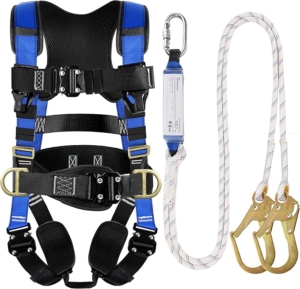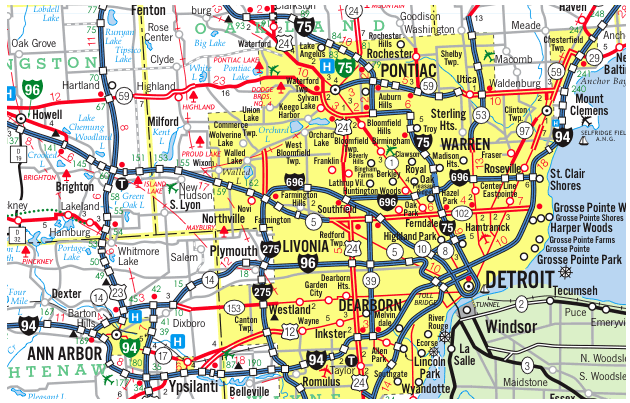The Most Common Safety Violations Penalized by MIOSHA on Construction Sites
Construction sites are inherently risky environments due to the variety of tasks being performed, the use of heavy machinery, and the constant movement of workers. The Michigan Occupational Safety and Health Administration (MIOSHA) plays a critical role in regulating safety on construction sites in Michigan by ensuring compliance with safety standards, conducting inspections, and imposing penalties for violations. Some safety violations occur more frequently than others, and these typically result in the most significant penalties.
1. Fall Protection Violations
One of the most common and most serious safety hazards on construction sites is the risk of falls. According to MIOSHA, fall protection violations are among the most frequently cited and penalized infractions. Falls from elevated surfaces, such as scaffolding, roofs, and ladders, are a leading cause of fatal accidents on construction sites.
Common Violations:
- Failure to provide proper guardrails, fall arrest systems, or other safety measures for workers at heights.
- Inadequate use of personal protective equipment (PPE) such as harnesses, lanyards, and ropes.
- Unsecured scaffolding or inadequate fall protection systems on scaffolds.
Why It’s Penalized: Due to the high risk of injury or death from falls, MIOSHA mandates fall protection measures under the Occupational Safety and Health Administration (OSHA) regulations. Noncompliance with these regulations, such as not providing fall protection at elevated work sites, results in significant penalties, often categorized as “serious violations.”
2. Lack of Proper Personal Protective Equipment (PPE)
PPE, including hard hats, gloves, safety glasses, and steel-toed boots, is essential for protecting workers from various hazards on construction sites. MIOSHA requires employers to ensure workers are provided with appropriate PPE and are trained in its use.
Common Violations:
- Failure to provide or require the use of hard hats in areas where head injury risks are present.
- Workers not using eye protection while handling hazardous materials or working near flying debris.
- Not supplying respiratory protection in environments where workers are exposed to toxic dust, fumes, or gases.
Why It’s Penalized: PPE violations are often penalized due to their direct impact on worker safety. Failure to supply or enforce the use of appropriate PPE can expose workers to significant health risks and injuries, making it one of the most heavily penalized violations on construction sites.
3. Scaffold Safety Violations
Scaffolding is an essential part of many construction projects, providing a temporary platform for workers to reach elevated areas. However, improper use or setup of scaffolding can lead to serious accidents, including falls and structural collapses.
Common Violations:
- Inadequate training for workers on how to assemble, use, or disassemble scaffolding.
- Failure to properly secure scaffolding, leading to instability or tipping.
- Using scaffolds that are damaged or in disrepair.
Why It’s Penalized: Scaffolding violations are penalized due to their high potential for catastrophic accidents. MIOSHA requires that scaffolds be erected, maintained, and used according to strict safety guidelines to minimize the risk of falls, collapses, and other injuries. Noncompliance with these regulations typically results in substantial fines.
4. Electrical Safety Violations
Construction sites often involve the use of electrical systems, tools, and equipment, which can present significant hazards if not handled properly. Electrical safety violations are consistently among the most common issues cited by MIOSHA inspectors.
Common Violations:
- Failure to lockout/tagout electrical equipment to prevent accidental energization.
- Exposing workers to live electrical circuits without adequate protection.
- Use of faulty or damaged electrical cords and tools.
Why It’s Penalized: Electrical hazards can cause severe injuries, including electrocution, burns, and fatalities. MIOSHA enforces stringent electrical safety standards to protect workers, and violations are penalized heavily to ensure compliance and prevent accidents.
5. Trenching and Excavation Violations
Trenching and excavation work can be extremely hazardous, as cave-ins and other soil-related accidents are a leading cause of construction fatalities. MIOSHA has strict regulations in place to ensure the safety of workers involved in these activities.
Common Violations:
- Failing to provide proper shoring, shielding, or trench boxes in deep excavations.
- Lack of a competent person on site to inspect trenching operations.
- Workers entering unprotected trenches that are more than 5 feet deep.
Why It’s Penalized: The potential for cave-ins or other trench-related accidents makes this a high-priority safety concern for MIOSHA. Violations are penalized because they place workers at a high risk of injury or death. MIOSHA requires protective measures like shoring, trench boxes, or sloping to prevent accidents.
6. Machine Guarding Violations
Construction sites often use heavy machinery such as power saws, bulldozers, and forklifts, all of which can cause severe injuries if not properly guarded. Machine guarding ensures that moving parts, flying debris, and other dangerous machinery features do not pose a hazard to workers.
Common Violations:
- Failure to install safety guards on moving parts of machinery.
- Workers bypassing or removing machine safeguards to increase productivity.
- Lack of proper training on machine safety.
Why It’s Penalized: Machine guarding violations are penalized because they leave workers exposed to moving parts and machinery hazards, which can lead to serious injuries or fatalities. Ensuring all machinery is properly guarded is a fundamental aspect of workplace safety.
Conclusion
Construction site safety is of paramount importance, and MIOSHA is dedicated to enforcing regulations that protect workers from the most common hazards. Among the violations that result in the heaviest penalties are those involving fall protection, PPE, scaffolding, electrical safety, trenching and excavation, and machine guarding. Employers must take proactive steps to comply with MIOSHA regulations, including providing proper training, ensuring the correct use of safety equipment, and maintaining a safe work environment. By doing so, they can reduce the risk of accidents and avoid costly penalties while safeguarding the well-being of their workforce.



 Our Construction company is Servicing Southeast Michigan, Detroit and the Tri-County area Wyane, Oakland and Macomb;
Our Construction company is Servicing Southeast Michigan, Detroit and the Tri-County area Wyane, Oakland and Macomb;

